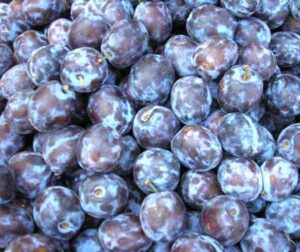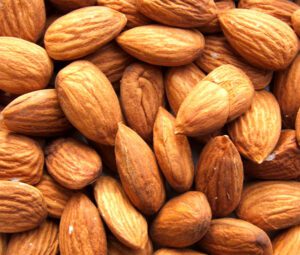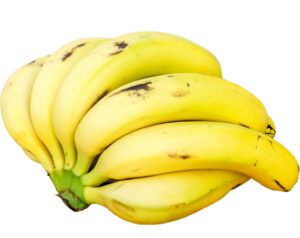Watermelon farming is very common and popular throughout the world. It is actually a highly cultivated fruit worldwide. And the fruit has both high demand and price in the market in almost everywhere around the world.
The watermelon is actually a plant species in the family Cucurbitaceae, a vine-like flowering plant originally domesticated in Africa. It is the most common and highly cultivated fruit around the world, having more than a thousand varieties.
Watermelon is a scrambling and trailing vine. There is evidence from seeds in Pharaoh tombs of watermelon cultivation in Ancient Egypt.
Watermelon plants grows well in favorable climates from tropical to temperate regions worldwide. It is grown for it’s large edible fruit, which is a berry with a hard rind and no internal divisions, and is botanically called pepo.[1]
The sweet, juicy flesh is generally deep red to pink, with many black seeds. Although, today there are seedless varieties available.
The fruit can be eaten raw or pickled, and the rind is edible after cooking. It is commonly consumed as a juice or as an ingredient in mixed beverages.
Considerable breeding effort has developed disease-resistant varieties. Today, there are many cultivars are available that produce mature fruit within 100 days of planting.
Watermelons are plants grown in climates from tropical to temperate. They require temperatures higher than about 25 °C to thrive.
The seeds are generally sown in pots under cover and transplanted into well-drained sandy loam with a pH between 5.5 and 7, and medium levels of nitrogen.
China is the world’s largest producer of watermelon. And in the year of 2017, China produced about two-thirds of the world total watermelons.
Watermelon Nutritional Benefits
Watermelon is very nutritious, and it is a popular fruit throughout the world. It is actually a very common and favorite food.
In a 100 grams serving, watermelon fruit supplies 125 kilojoules (30 kilocalories) of food energy and low amounts of essential nutrient. Only vitamin C is present in appreciable content at 10% of the daily value.
Watermelon fruit is about 91% water and around 6% sugar and low amount of fat. However, here we are shortly describing about the top advantages/benefits of consuming watermelons.
- Watermelon is an excellent source of water, containing around 91% of water. This fruit will keep you hydrated. And staying hydrated will keep your body cool during high summers.
- It will clean your body and keep your skin healthy.
- Watermelon is a juicy fruit, and it will help your kidneys convert L-citrulline (amino acid) into L-arginine (amino acid). These two amino acids have a tendency to protect you from diabetes.
- Watermelon consists of mostly water, so it will give you a feeling of fullness and this will curb your appetite from snacking on your favorite food. Thus it can help you in weight loss.
- Consuming watermelon is beneficial for preventing cardiovascular disease.
- This fruit is a good source of vitamin C. And vitamin C is responsible for reducing the effects of asthma and this could mean that you could be fighting some of the severe effects of asthma with just one cup of watermelon everyday.[2]
- Watermelon is known for reducing dental problems. And it is also good for your kidneys.
- Watermelon fights inflammation. You can can avoid heart disease, cancer and fibromyalgia if you consume watermelon regularly.
- Watermelon is good for nerve function. It is a rich source of potassium that can regulate nerve function.
- Some compounds in watermelon, including cucurbitacin E and lycopene, have been studied for their potential to prevent cancer (though study results are mixed).
- Watermelon juice has some potential as a recovery beverage after exercise. Citrulline may be partially responsible for its effect of easing muscle soreness.
- Regular consumption of watermelon is very good or your skin and hair. There are several nutrients in watermelon which will help your skin and hair healthy.
- Watermelon contains fiber and water. Both are very important for healthy digestion.
Advantages of Watermelon Farming
Watermelon is very common and popular throughout the world. It is the most popular and highly cultivated fruit.
So, both demand and value are great in the market. You can easily start watermelon farming business if you want to make profits from agribusiness.
You can start commercial watermelon farming business, even if you are a beginner. Here we are shortly describing about the top advantages/benefits of watermelon farming.
- Commercial watermelon farming is a very common and popular business idea, and many people are already doing this business.
- Growing the watermelon plants is relatively easy. So, you can take this opportunity for making good profits.
- Watermelon is a very popular fruit throughout the world. Both demand and price are high in the market.
- Watermelon plants can be grown in almost everywhere around the world.
- Commercial watermelon farming can be a good business idea, if you are an unemployed educated person.
- Commercial watermelon farming can be a great business for creating employment source for rural unemployed people.
- Profits are high in comparison to total expenditure. The ROI is good in this business.
- Watermelons have very good demand in the market. So, you will be able to easily sell your products in your local or any nearest market.
- Consuming watermelon regularly is good for health. You can enjoy fresh fruits if you start your own watermelon farming business.
How to Start Watermelon Farming Business
Starting commercial or small scale watermelon farming is very easy and simple. The plants grow well in almost everywhere and caring process is relatively easy.

You can start this business, even if you are a beginner. Here we are trying to describe more information about starting and operating successful watermelon farming business from planting, caring to marketing and harvesting.
Select Good Location
You have to select a very good location for starting your watermelon farming business. Watermelons grow well in rich, slightly sandy soils with pH levels from 5.5 and 7.0.
The watermelon plants do not like soggy soils. And avoid heavy clay soils with poor drainage and aeration system. Also ensure availability of full sun.
Prepare the Soil
Preparing the soil perfectly is very important for watermelon cultivation. Successful growing of watermelon plants require extensive soil preparation before planting.
The basic soil preparation starts about 5 months before transplanting watermelon seedlings. Plow the soil well at that time.
Plowing improves soil aeration and drainage. At the same time, plowing removes rocks and other undesirable materials from the soil. Till the soil perfectly, right after plowing.
Apply as much organic fertilizer as you can while preparing the soil before planting.
Climate Requirement For Watermelon Farming
Watermelon plants are grown in climates from tropical to temperate. They require temperatures higher than about 25 °C to thrive. Preferable temperature for growing watermelon plants is between 25 °C and 30 °C.
Best Time For Watermelon Farming
Watermelon plants can be grown throughout the year. Exact time vary depending on your location. In cool climates with short growing seasons, start seeds indoors 2 to 3 weeks before your last frost date. Plan to transplant seedlings into the garden about 2 weeks after that date.
In warmer climates with long growing seasons, sow seeds directly outdoors 1 to 2 weeks after your last frost date, as long as the soil temperature has warmed to at least 21 °C. Warmer soil helps prevent poor germination.
Watermelon Varieties
There are several, actually hundreds of watermelon varieties available throughout the world. Not all these varieties are good for commercial watermelon farming business. Try to determine which variety grows well in your area, and has good market demand. You can also consult with an expert in your area for having more ideas.
Purchase Seeds
The watermelon plants are grown from seeds. So, you have to purchase seeds from any of your nearest seed supply stores. Always try to purchase new and good quality seeds. Because good quality seeds always ensure good production. Today, there are some seed supply companies with online stores. So, you can also consider ordering the seeds online.
Seeds Per Acre
You will need about 1.5 to 2 kg of seeds for sowing one acre land.
Planting
Watermelon plants can be grown throughout the year. Exact time vary depending on your location. In cool climates with short growing seasons, start seeds indoors 2 to 3 weeks before your last frost date. Plan to transplant seedlings into the garden about 2 weeks after that date.
In warmer climates with long growing seasons, sow seeds directly outdoors 1 to 2 weeks after your last frost date, as long as the soil temperature has warmed to at least 21 °C. Warmer soil helps prevent poor germination.
Spacing: Actual spacing distance may vary depending upon sowing method. In pit method, use row to row spacing of 2-3.5 meters and 0.6 meters between 2 plants.
Sowing Depth: Plant the seeds about 2-3 cm deep.
Sowing Method: Different methods are used for sowing. Furrow method, pit method and hill method are most used. Although exact method depends upon climate and season.
Caring
Taking additional caring is very important for watermelon farming. Because the watermelon plants require good caring and other maintenance.
Although, all the caring process of watermelon plants is very easy. Here we are shortly describing about the caring process of watermelon plants.
Fertilizing
Apply as much organic materials as you can while preparing the soil. Watermelon plants love rich soil with lots of organic materials.
Apply Nitrogen@25kg, Phosphorus@16kg and Potash@15kg in form of Urea@55kg, Single Super Phosphate@100kg and Muriate of Potash@25kg per acre. Apply whole amount of Phosphorus, Potash and one third amount of Nitrogen before sowing seed. Apply remaining dose of Nitrogen near vines base, avoid touching it and mixed well in soil during initial growth period.
Irrigation
During the summer season, apply irrigation every week. And give irrigation only when needed during the time of maturity.
Avoid over flooding in watermelon field. Don’t wet the vines or vegetative parts of the plants while applying irrigation (especially during flowering and fruit-set).
Avoid frequent irrigation, in heavy soil, as it will promote excessive vegetative growth. Reduce or stop watering 3-6 days before harvesting for better sweetness and flavor.
Mulching
Mulching is very important for growing watermelon plants. Mulching helps to retain moisture into the soil and it also helps to prevent weeds. You can use organic materials (such as dry leaves, straw etc.) or polythene as a mulch.
Weed Control
Keeping the field weed free is very important for watermelon farming business. Weeds consume nutrients from the soil, and the plants will suffer.
Keep the bed weed free during the early stage of growth. In absence of proper control measures, weed can cause yield loss of about 30%.
Carry out intercultural operations, 15 to 20 days after sowing. 2-3 weeding are required depending upon severity and intensity of weeds.
Flowering & Fruiting
Vines produce both male and female flowers separately on the same plant. They often begin producing male flowers several weeks before the females appear.
Don’t be concerned if the male flowers fall off. The female flowers will stay on the vine and bear fruit.
Blossoms require pollination to set fruit, so be kind to the bees. As the fruit is ripening, prevent rotting by gently lifting it and putting cardboard or straw between the fruit and the soil.
Pruning
Pruning generally isn’t necessary for watermelon plants. But vine productivity may be improved if you do not allow lateral vines to grow and stick to the main vine.
Pests & Diseases
The watermelon plants are susceptible to some diseases and pests. Here we are shortly describing about some common diseases and pests of watermelon plants.
Pests
Common pests that damage the watermelon plants and fruits are listed below.
Aphids & Thrips: These aphids and thrips suck the sap from the leaves. Resulting in yellowing and dropping of leaves. Thrips results in curling of leaves, and the leaves become cup shaped or curved upward.
Fruit Fly: It is a serious pest of the watermelon plants. Females lay eggs below epidermis of fruits. Later on maggots feed on pulp afterward fruits starts rotting.
Anthracnose: Anthracnose affected foliage appears scorched appearance.
You can control all these pests by applying both organic and chemical pesticides. Consult with an expert in your area.
Diseases
The watermelon plants are also susceptible to some diseases. Their common diseases are listed below.
Powdery Mildew: Patchy, white powdery growth appears on upper surface of the leaves. And also on the main stem of infected plant. It parasitizes the plant using it as a food source. In severe infestation it causes defoliation and premature fruit ripening.
Leaf Miner: Maggots of leaf miner feed on leaf and make serpentine mines into leaf. It affects the photosynthesis and fruit formation.
Sudden Wilt: It can affect crop at any stage. Plant get weak and give yellow appearance at initial stage. And in severe infestation complete wilting is observed.
You can apply both organic and chemical ways for controlling these diseases. Consult with an expert in your area.
Harvesting
If tendril near stem gets dried also whitish color of fruit which touch to ground get yellowish then assume that fruit is ready for harvesting.
On thumping melon if it sounds hollow (usually as a dull thump or thud) then it is ready for harvest and immature fruit sounds dense. Don’t pick immature fruits as they ripe only when attached to vine.
Immature fruit don’t have rich sugar content or color. To harvest ripe fruit, cut stem 1″ from fruit with a pair of sharp pruners or knife. Fruit can be stored in a cool humid environment.
Post-Harvesting Tasks
Grade the fruit on the basis of size of fruits. Watermelons can be stored for about 2 weeks at temperature of 15 °C. But remember, do not store watermelon with apples and banana as it developed off flavor along with softening of fruit.
Yield
Exact yield is not possible to tell, because it depends on various factors. On an average, you can expect 7 to 8 tons per acre.
Marketing
Marketing watermelon is very easy. You will probably be able to easily sell your products in the local market. Although, you should set your marketing strategies before starting this business.
These are the common ways and steps for starting and operating a successful watermelon farming business. Hope this guide has helped you! Good luck & may God bless you!






